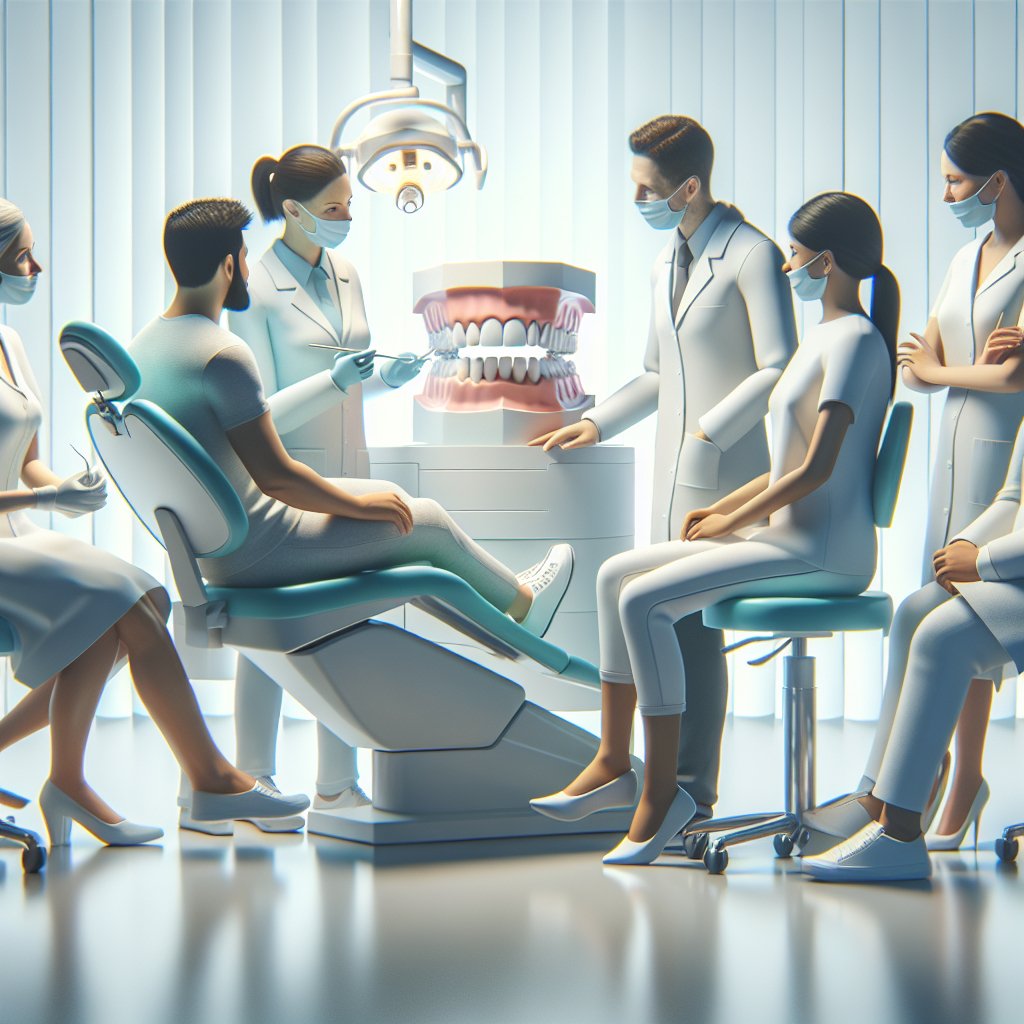Dental anxiety is a common issue that affects a significant portion of the population, often leading to avoidance of necessary dental care. Dentists are increasingly aware of this challenge and are implementing various strategies to help patients feel more comfortable and relaxed during their visits. This article explores the methods and techniques that dental professionals are using to address dental anxiety, ensuring that patients receive the care they need without the added stress.
Understanding Dental Anxiety
Dental anxiety can manifest in various ways, from mild nervousness to severe phobias that prevent individuals from seeking dental treatment altogether. Understanding the root causes of this anxiety is crucial for dentists aiming to alleviate their patients’ fears. Common factors contributing to dental anxiety include:
- Previous Negative Experiences: Many patients have had unpleasant experiences in the dental chair, leading to a lasting fear of future visits.
- Fear of Pain: The anticipation of pain during procedures can cause significant anxiety, even if the actual experience is not as painful as expected.
- Loss of Control: Being in a vulnerable position while undergoing treatment can make patients feel helpless, heightening their anxiety levels.
- Embarrassment: Some individuals may feel embarrassed about their dental health or hygiene, which can lead to anxiety about being judged by the dentist.
Recognizing these factors allows dentists to tailor their approach to each patient, creating a more supportive and understanding environment.
Techniques for Managing Dental Anxiety
To effectively address dental anxiety, dentists are employing a variety of techniques that focus on patient comfort and emotional well-being. These methods can be categorized into behavioral strategies, environmental modifications, and pharmacological interventions.
Behavioral Strategies
Behavioral strategies aim to change the way patients think about dental visits and help them develop coping mechanisms. Some effective techniques include:
- Patient Education: Providing clear information about procedures can demystify the dental experience. When patients understand what to expect, their anxiety often decreases.
- Relaxation Techniques: Dentists may teach patients relaxation methods, such as deep breathing exercises or visualization techniques, to help them manage anxiety during appointments.
- Gradual Exposure: For patients with severe anxiety, gradual exposure to the dental environment can be beneficial. This might involve visiting the office for a consultation without any treatment, allowing patients to acclimate to the setting.
- Positive Reinforcement: Encouraging patients and celebrating their progress can help build confidence and reduce anxiety over time.
Environmental Modifications
The dental office environment plays a significant role in how patients perceive their experience. Dentists are making efforts to create a more calming atmosphere through:
- Comfortable Waiting Areas: Providing a welcoming and relaxing waiting area with comfortable seating, soothing music, and calming decor can help ease anxiety before appointments.
- Distraction Techniques: Many dental practices now offer distractions, such as televisions, music, or virtual reality headsets, to help patients take their minds off the procedure.
- Gentle Communication: Dentists and staff are trained to communicate in a gentle and reassuring manner, using language that is easy to understand and avoiding technical jargon that may confuse or frighten patients.
Pharmacological Interventions
In some cases, dentists may recommend pharmacological interventions to help manage anxiety. These can include:
- Nitrous Oxide: Commonly known as laughing gas, nitrous oxide is a safe and effective sedative that helps patients relax during procedures while remaining conscious.
- Oral Sedatives: For patients with moderate to severe anxiety, dentists may prescribe oral sedatives to be taken before the appointment, helping to calm nerves.
- IV Sedation: In more extreme cases, intravenous sedation may be used, allowing patients to enter a state of deep relaxation or sleep during the procedure.
The Role of Technology in Reducing Dental Anxiety
Advancements in technology are also playing a significant role in reducing dental anxiety. Innovative tools and techniques are being developed to enhance patient comfort and streamline the dental experience.
Digital Imaging and 3D Technology
Digital imaging and 3D technology have revolutionized the way dentists diagnose and treat dental issues. These technologies allow for:
- Enhanced Visualization: Patients can see detailed images of their dental health, which can help them understand the need for treatment and reduce fear of the unknown.
- Less Invasive Procedures: Advanced imaging techniques enable dentists to plan less invasive procedures, which can lead to quicker recovery times and less discomfort.
Tele-dentistry
Tele-dentistry has emerged as a valuable tool for managing dental anxiety, especially during the COVID-19 pandemic. This approach allows patients to:
- Consult Remotely: Patients can discuss their concerns and treatment options with their dentist from the comfort of their home, reducing anxiety associated with in-person visits.
- Receive Guidance: Dentists can provide guidance on managing dental issues and anxiety, helping patients feel more prepared for future appointments.
Building a Supportive Dentist-Patient Relationship
Ultimately, the key to addressing dental anxiety lies in building a strong, supportive relationship between the dentist and the patient. This relationship is fostered through:
- Open Communication: Encouraging patients to express their fears and concerns allows dentists to tailor their approach and provide reassurance.
- Empathy and Understanding: Dentists who demonstrate empathy and understanding can help patients feel more at ease, creating a safe space for open dialogue.
- Consistent Follow-Up: Following up with patients after procedures can help reinforce trust and show that the dentist cares about their well-being.
Conclusion
Addressing dental anxiety is a multifaceted challenge that requires a comprehensive approach from dental professionals. By understanding the root causes of anxiety, implementing effective techniques, leveraging technology, and fostering supportive relationships, dentists can significantly improve the dental experience for anxious patients. As awareness of dental anxiety continues to grow, the dental community is committed to creating a more comfortable and positive environment for all patients, ensuring that everyone has access to the essential care they need.




